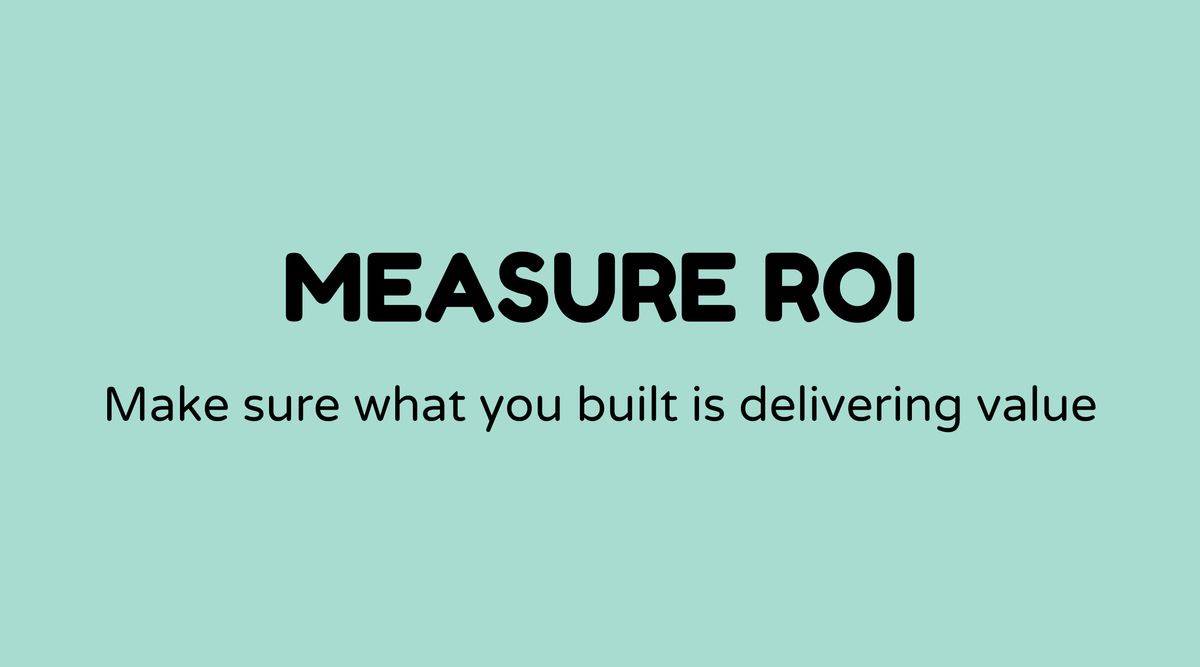Measure ROI

Overview of Measuring ROI:
When you encounter the term Return on Investment (ROI), view it as a financial guide that directs businesses toward profit optimization. But how can you accurately assess ROI and why is it important? Today, we’ll delve into the details of measuring ROI, highlighting its significance and equipping you with the tools to evaluate it prudently. Let’s clarify the landscape of investment returns.
For businesses, comprehending their ROI is not merely a task to complete; it’s an essential sign of success and future sustainability. By evaluating ROI, one can determine whether the effort justifies the resources expended, whether that's time, money, or manpower. Here’s a pro tip: knowing how to assess ROI is akin to possessing a key to your organization’s financial well-being.
Importance of Measuring ROI:
Why the emphasis on ROI? Well, assessing ROI plays a fundamental role in effective resource allocation. It ensures that every dollar spent adds value and aligns with business objectives. Imagine funding a marketing initiative and discovering that interest in your products has surged—that's the essence of ROI! It’s not solely about data; ROI reflects customer engagement and business enhancement.
Top executives often discuss ROI—it's central to strategic discussions and crucial in pitches to investors. It assists in decision-making and also conveys a narrative about efficiency and profitability. Here’s a piece of advice: consistent ROI evaluations can shift business strategies in real-time!
Understanding ROI Measurement:
At its essence, measuring ROI involves comparing the net income from an investment to its cost. Simply put, ROI helps you gauge the returns on your expenditure. It’s typically represented as a percentage, offering a clear view of performance. So, how do you achieve this? Here’s a straightforward formula:
[ \text{ROI} = \left( \frac{\text{Net Profit}}{\text{Cost of Investment}} \right) \times 100 ]
By calculating these figures, you gain insights into the effectiveness of investments, distinguishing what works from what doesn’t. Think of ROI as your business investigator, revealing insights hidden within the data!
Steps to Measure ROI Accurately:
To measure ROI effectively, it’s vital to have a solid grasp of both input and output factors. Start with defining clear objectives for your investment—having a target simplifies measurement. Then, follow these guidelines:
-
Calculate Total Costs: Include all expenses associated with the investment—both direct and indirect. Consider overheads, materials, marketing, labor, etc.
-
Determine Net Income: Subtract the total costs from the gross return. The remainder is your net income.
-
Use the ROI Formula: Apply the formula mentioned previously. Simple enough?
-
Analyze Outcomes: Compare the results against industry standards and your own historical data.
-
Ongoing Monitoring: Track ROI trends over time. Recurring patterns tell a narrative, steering future choices.
Mastering these steps will enhance how you evaluate business activities, always guiding your enterprise toward profitability!
Examples of ROI Measurement:
ROI is not a uniform metric; diverse sectors utilize it in various ways, illuminating different investment impacts. Here are two classic examples:
-
Digital Marketing Campaigns: Imagine a company investing $10,000 in online advertisements and observing a resulting increase in sales totaling $15,000. Using the ROI formula, the calculation would be:
[ \text{ROI} = \left( \frac{15,000 - 10,000}{10,000} \right) \times 100 = 50% ]
-
Real Estate Investment: Consider an investor purchasing a property for $200,000 and later selling it for $250,000. Here’s how ROI is calculated:
[ \text{ROI} = \left( \frac{250,000 - 200,000}{200,000} \right) \times 100 = 25% ]
Different scenarios, yet both highlight the importance of ROI in assessing financial outcomes.
FAQs
What constitutes a good ROI percentage?
A "good" ROI often varies by investment type and industry standards. Typically, anything above 15% is regarded as favorable across sectors.
How frequently should one assess ROI?
Regular assessments are essential! Frequent evaluations—quarterly or biannually—allow for the early detection of trends, enabling strategy adjustments.
Can ROI assess non-financial gains?
While primarily financial, ROI can encompass qualitative factors like customer satisfaction and brand awareness when integrated with other metrics.
What tools assist in measuring ROI?
There are excellent analytical tools and software available, such as Google Analytics for digital strategies or CRM systems for tracking sales.
What are the risks of a high ROI?
High ROI figures may obscure underlying issues such as unsustainable practices or inadequate cost analysis. Always investigate further!
Is ROI relevant for nonprofit organizations?
Definitely! Nonprofits utilize ROI to evaluate resource distribution efficiency and the effectiveness of fundraising efforts, focusing on mission success rather than pure profit.



